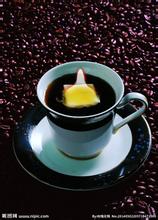Flavor description of Yunnan Pu'er Katim AAA Coffee Bean
Flavor description of Yunnan Pu'er Katim AAA Coffee Bean
Coffee cultivation in China is concentrated in Yunnan and Hainan provinces. Yunnan has a large output, with an annual output of about 26000 tons in recent years, accounting for 90 per cent of the national output. It is said that Yunnan coffee came from the French 70 or 80 years ago. The main variety is Arabica Arabica, that is, the so-called small seed coffee, commonly known as Yunnan small grain coffee. Yunnan's high-quality geographical and climatic conditions provide good conditions for coffee growth. The planting areas are Lincang, Baoshan, Simao, Xishuangbanna, Dehong and other prefectures. The natural conditions of Yunnan are very similar to those of Colombia, that is, low latitude, high altitude and large temperature difference between day and night. The small grain coffee produced by cup quality analysis is mellow, and its quality and taste is similar to that of Colombian coffee.
All the varieties planted in Pu'er area of Yunnan are catimor (Katim). In Baoshan City, typica and bourbon were introduced as early as the 1950s, and the locals called them "old varieties". Because the old varieties have low disease and insect resistance and yield, and the management is relatively expensive and manpower, coupled with the market purchase price does not have many advantages, brown farmers have changed to a new variety catimor in recent years. From the botanical point of view of coffee, Yunnan small-grain coffee is genetically similar to the recognized best blue mountains in Jamaica (Jamaica Blue Mountain) and Kona in Hawaii.
Catimor, also known as Katim, was bred by the Portuguese in 1959. It has 3/4 Arabica lineage and 1/4 Robusta pedigree. Its most important feature is its extremely strong and strong resistance to leaf rust. This is an ideal commercial variety for coffee producers in terms of yield, maturity, pest resistance and flavor. However, once planted at high altitudes, its inherent "inferiority" is undoubtedly exposed, while the advantages of older, more native Arabica coffee, such as Tibica and Bourbon, are fully demonstrated. At present, each series of Katim has a very large planting area in Yunnan, and coffee farmers are optimistic about its three major advantages of short trees, high yield and disease resistance (resistance to longicorn beetles and leaf rust). At present, Katim in Yunnan has not yet won a prize in any authoritative competition, which is not a fine product, and there is a long way to go to improve and explore.
1. [output] compared with the popularity of Pu'er tea, the fame of Pu'er coffee is not commensurate with the output. Yunnan coffee production accounts for 98.8% of the country's total output; Pu'er coffee production accounts for 57.8% of Yunnan's total output; and the price of a cup of Starbucks coffee is equivalent to 25 cups of AA grade Yunnan coffee beans.
2. [planting] in 2011, planting one mu of coffee trees in Pu'er can earn 4000-8000 yuan.
3. [export] Pu'er plays a primary role, and most of the coffee produced is supplied to multinational corporations in the form of raw materials.
In 2011, 70% of the coffee beans produced in Yunnan were carved up by coffee giants such as Starbucks, Nestl é, Maxwell and so on.
Coffee exported from Pu'er accounts for 77.8% of Yunnan's total exports.
4. [roasting] Yunnan has the largest coffee processing production line in China, with annual roasted coffee beans reaching 3000 tons.
Starbucks' Yunnan joint venture baking company says the value of coffee beans can rise 10 times after deep processing.
As the largest coffee shop customer in Yunnan, Starbucks has more than 13000 coffee shops in 39 countries around the world.
About 230 of them are in the mainland.
However, Starbucks does not have a store in Pu'er, and it is still difficult to find an authentic coffee shop in Pu'er.
6. [retail] Nest Company buys 12% of the world's annual coffee output every year, of which the proportion of purchases in Yunnan is increasing year by year.

Important Notice :
前街咖啡 FrontStreet Coffee has moved to new addredd:
FrontStreet Coffee Address: 315,Donghua East Road,GuangZhou
Tel:020 38364473
- Prev

Description and treatment of taste and flavor of Tarazhu coffee red honey in Costa Rica
Costa Rican Tarazu Coffee Red Honey Taste and Flavor description method Coffee production area introduces that after peeling, the peel and pulp of the coffee fruit is recovered as feed for livestock, or converted into organic fertilizer, and coffee bean dryer fuel. It can be said that in every process of coffee production, Costa Rica complies with the requirements of maintaining the natural environment. Brother Jae
- Next

What is the difference in the description of the flavor and taste of Yega Xuefei and Sidama coffee beans?
The difference between the flavor and taste of Yegashifi and Sidamo coffee beans lies in where the Sidamo taste is close to the floral flavor, but with a slightly earthy flavor. Water washing has a nutty fruit aroma with a slight cocoa aroma, but what the two have in common is smooth taste and viscosity, comfortable and pleasant acidity and fragrance. Light or medium roasting is suitable for individual products, while medium or deep roasting is suitable for blending coffee and good Es.
Related
- Detailed explanation of Jadeite planting Land in Panamanian Jadeite Manor introduction to the grading system of Jadeite competitive bidding, Red bid, Green bid and Rose Summer
- Story of Coffee planting in Brenka region of Costa Rica Stonehenge Manor anaerobic heavy honey treatment of flavor mouth
- What's on the barrel of Blue Mountain Coffee beans?
- Can American coffee also pull flowers? How to use hot American style to pull out a good-looking pattern?
- Can you make a cold extract with coffee beans? What is the right proportion for cold-extracted coffee formula?
- Indonesian PWN Gold Mandrine Coffee Origin Features Flavor How to Chong? Mandolin coffee is American.
- A brief introduction to the flavor characteristics of Brazilian yellow bourbon coffee beans
- What is the effect of different water quality on the flavor of cold-extracted coffee? What kind of water is best for brewing coffee?
- Why do you think of Rose Summer whenever you mention Panamanian coffee?
- Introduction to the characteristics of authentic blue mountain coffee bean producing areas? What is the CIB Coffee Authority in Jamaica?

